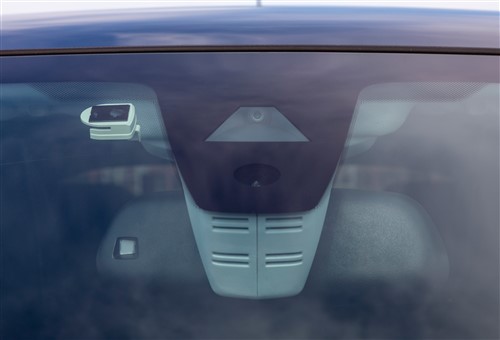
While the plethora of ADAS systems on modern Nissan vehicles is no doubt good for the safety of vehicle occupants, the practicalities involved in maintaining or repairing some ADAS systems on Nissan vehicles can sometimes make life very difficult for us, as technicians and mechanics. Some practical issues involve a lack of space, the absence of glare-free lighting, and the proliferation of magnetic objects in the average workshop- all of which could sometimes make it impossible to perform accurate and valid calibrations of some ADAS systems.
However, in recent years, Nissan has not only released a large number of TSBs that address several specific ADAS issues but also approved several hand-held tools that make it a lot easier for us to perform several ADAS checks and verifications within the confines of our places of employment. Thus, in this two-part article, we will discuss some of these tools and explain how they could make our lives easier. Before we get to specifics, though, let us start by saying that-
An alternative heading for this could have been something like "It helps to learn what you don't know", but the problem with this is that we often don't know what we should know. For example, few of us own cars that are equipped with a full suite of ADAS systems, so when we encounter ADAS issues on a customer's vehicle, it is not always easy to recognize abnormal behaviour from one or more ADAS systems.
According to some ADAS experts, one way of learning how ADAS systems should work is to rent or hire high-end vehicles over weekends to learn how these should work and while everyone is entitled to an opinion, this is not a viable approach for most of us due to the costs involved. Therefore, this writer suggests that a more cost-effective method would be to spend at least an hour or so every day searching out and reading up on how Nissan implements their ADAS systems. This will do two things- the first is that you'll have a better understanding of how ADAS systems on Nissan vehicles should work, and the second is that it will be easier to recognise abnormal ADAS system behaviour (s).
The point of the above is this; if we expect any given ADAS system on Nissan vehicles to work in a certain way and it does not work as we expected, we might be tempted to conclude that the system does not work even though there is nothing wrong with the system. The only wrong thing is often our lack of understanding of how the system works, and what it is supposed to do.
It also helps to manage our customers' expectations. For example, this writer has dealt with many cases of a customer complaining that one or other ADAS system on their vehicle is not working when in reality, the vehicle is not fitted with the "malfunctioning" ADAS system. More to the point, though, this writer has also seen relatively experienced technicians trying to diagnose issues with ADAS systems that are not present on the vehicle. In such cases, both the technician and the customer have false expectations; the technician is expecting to fix a system that does not exist, and the customer is expecting a repair that is impossible to execute.
So on a purely practical level, customers can be forgiven for not knowing how the ADAS systems on their vehicles work, but there is no excuse for us as mechanics and technicians not to have at least a thorough working knowledge of how ADAS systems on Nissan vehicles work. However, before we get overconfident, we should always remember that scan tools, including Nissan's dealer-grade tools, do not always provide the answers we need.
To remain effective as technicians, we still need to use our problem-solving and critical thinking skills to "fill in the gaps" in complex diagnostic strategies, which should ideally include-

The importance of performing a comprehensive diagnostic scan both before and after performing work on any ADAS system on any Nissan vehicle cannot be overstated, because the absence of warning lights or alarms does not necessarily mean that ADAS issues have been resolved definitively. Consider this official statement by Nissan North America-
“…The presence of increasingly sophisticated and inter-connected technology* supports and necessitates the requirement of all Nissan vehicles having a diagnostic system scan to identify any diagnostic Trouble Codes present, even in cases where there is no identifiable Malfunction Indicator Light illuminated on the vehicle's dashboard… A pre-repair system scan is recommended to identify items in advance that are malfunctioning on a vehicle… The post-repair diagnostic system scan is required to confirm DTCs are properly resolved and assist in system calibrations, helping to ensure our owners’ safety and satisfaction.” (Bolding added for emphasis)
NOTE: In this context, inter-connected technology refers to technologies that underpin ADAS systems on Nissan vehicles.
It is perhaps worth noting that for warranty purposes, the requirement to perform post-work scans extends to all independent workshops in the North American market. Therefore, it is almost certain that Nissan Australia will also hold local independent workshops liable for costs incurred due to ADAS faults and failures that result from a failure to perform a thorough post-work scan and to keep a record of it- especially when a vehicle is still covered by its factory warranty.
So what does this mean for us, as mechanics and technicians? You may well ask because we remain liable for faults and defects that may still be present in ADAS systems after we have done work on these systems. Of course, those among us who have access to current dealer-grade equipment can perform post-work scans to verify the results of their fixes, but those among us who do not have access to dealer-grade equipment only have warning lights as a guide.
As mentioned elsewhere, relying on only warning lights to verify ADAS repairs is a risky business but high-end generic scan tools are now available that can perform specific after-work scans to verify the integrity of repairs on many ADAS systems.
It is worth noting that although even the best generic scan tools lack some of the functionalities of Nissan’s CONSULT software, a high-end generic scan tool is often a viable alternative to CONSULT-based equipment if the generic scan tool can perform targeted after-work scans, which will give you a distinct advantage over the other mechanics and technicians in the workshop.
However, purchasing an advanced generic scan tool to avoid liability should an unresolved ADAS fault slip through the proverbial cracks can be a costly exercise, but then again, it is usually cheaper than the cost of an accident caused by an unresolved fault in an ADAS system you were the last person to work on, which leaves us with just-
In Part 2 of this article, we will discuss new and innovative ways to test Park Assist sensors and talk about new steps you need to be aware of when you are attempting to scan ADAS and other systems on new or late-model Nissan vehicles.
In addition, we will also discuss the effects that fitting non-approved accessories and vinyl wraps has on some ADAS systems on Nissan vehicles, as well as the importance of TSBs that address specific issues with some ADAS systems on late-model Nissan products.